Moss in lawns
Moss can be found in most lawns, especially if growing conditions for the grass are poor. But there are several steps you can take if you want to keep excessive moss at bay.
Quick facts
Main causes Damp conditions, poor drainage and sparse, patchy turf
Timing Treat in autumn or spring
Jump to
Is moss a problem?
There are several types of moss that grow in lawns. These are usually coarse, loose, green or yellowish-green tufts between the grass, but can form densely matted tufts. In the case of Polytrichum, it can even resemble a small forest of miniature Christmas trees.
Moss in a lawn isn’t necessarily a problem – if your grass is thin or patchy, moss can keep the lawn green and soft to walk on, and it creates a valuable habitat for small invertebrates. Having a wide range of plants in your lawn increases its value to wildlife. Moss can also be beautiful – it’s widely used in Japanese gardens to create velvety green carpets in damp or shady areas.
However, moss isn’t always welcome, especially if you want an all-grass lawn. It can give the turf an uneven colour and surface, and loose moss can make the lawn feel spongy under foot.
The best way to control excess lawn moss is to improve the growing conditions of the grass, so it becomes more vigorous and dense, outcompeting the moss.
If the moss is only in a small area of the lawn, perhaps caused by shade, you could consider replacing the affected section with a more suitable alternative, such as shade-loving ground-cover plants and plants that thrive under trees. Artificial turf isn’t an effective or sustainable option, as moss can establish in this too. Also see our guide to plastic-free gardening.
Causes of lawn moss
Moss can be temporary, following drought or waterlogging, or more persistent, usually the result of problems with the underlying soil or growing conditions.
The main reasons for excess moss in lawns are:
-
sparse, weak or patchy grass, which allows moss to get a foothold – this could be due to various factors including drought, shade, mowing too short or soil that’s low in nutrients
-
worn, bare areas of turf, such as where children play or where the grass is regularly walked on
-
compacted soil and/or poor soil preparation before the lawn was laid or sown
-
a damp climate and/or waterlogged conditions
-
poor lawn maintenance
Lawns in shade
Lawns: dead patches
Waterlogged lawns
To keep excess moss at bay long term, you need to first remove it, then improve the conditions that are allowing it to thrive, by following our tips below.
Removing moss without chemicals
Moss can be removed by raking or using a powered scarifier, or by applying a non-chemical, bacteria-based moss remover.
Raking or scarifying
Remove loose moss in autumn (September/October) by scarification or vigorous raking – the aim is to remove all the loose debris, but not uproot the grass. On a small lawn or if the moss is only in a limited area, this can be done with a spring-tined rake. For a larger area, you could hire a mechanical scarifier.
See how it’s done in our lawn care video (scarifying is the first job):

Autumn lawn care
Recycling moss
Moss raked out of lawns can be added to your compost heap. It can be slow to rot in large quantities, so mix it with other ingredients (ideally four times the volume of the moss). You can store and add it gradually as other material becomes available. As moss is very widespread, any spores that survive the composting process won’t add significantly to the risk of moss forming in your garden.
Fresh moss has many uses too – flower arrangers like to use in displays, while birds add it to their nests. It can be used to line hanging baskets and looks great as a mulch in containers of spring bulbs. You can also add it to wildlife habitats and bug hotels.
Non-chemical, bacteria-based products
These claim to achieve good control of moss, as well as feeding the lawn – products include Viano MO Bacter Organic Lawn Fertiliser, Neudorff Organic CleanLawn, VitaxMoss Remover No Rake and Miracle-Gro Evergreen No Rake.
These products can be applied from March to October when temperatures are above 15°C (59°F). They require wetting before they become active. Mow the lawn short before application and wait seven to ten days before mowing again.
They also offer the benefit that the dead moss should break down in the lawn, so doesn’t need to be raked out.
Other options for controlling moss
If you’ve tried non-chemical options but found they were unsuitable or not practical for you, then there are two types of chemical mosskiller you could consider. Take care to use these in a minimal and specifically targeted way.
-
Mosskiller containing sulphate of iron (or ferrous/iron sulphate) can be applied in autumn or spring. The moss will blacken after two or three weeks, then needs to be raked out (Also see note on ferrous sulphate, below)
-
Mosskiller combined with fertiliser (nitrogen, phosphorus or potassium, indicated by the abbreviations NPK) can be beneficial if the grass is growing poorly. Available products include Miracle-Gro Evergreen Complete 4 in 1, Westland Aftercut All-in-One Feed, Weed and Moss killer, and Maxicrop Moss Killer and Lawn Tonic liquid concentrate (with seaweed extract)
For more options, download the pdf Weedkillers for gardeners – see sections 1d and 2a for lawn mosskillers. Please note that inclusion of a weedkiller product does not indicate a recommendation or endorsement by the RHS. It is simply a list of products currently available to the home gardener.
Mosskiller should be applied in fine weather. Some require watering after 48 hours if there has been no rain – check the packet for details. Either scatter it by hand or use a push-along spreader. Be careful not to apply lawn sand (ferrous sulphate mixed with a carrier) at too high a rate, as this can blacken and kill the grass as well as the moss (see note on ferrous sulphate, below).
Dead moss raked out of lawns after treatment can be added to the compost bin, but mix it with plenty of other ingredients to help speed up its potentially slow decomposition.
On a new lawn, moss control is rarely required if the soil was prepared well. However, if the need does arise, check the packet instructions before use – many products shouldn’t be applied in the first six months or only after a certain number of cuts.
Also bear in mind that control with a mosskiller will only be temporary unless the conditions that allowed the moss to become established are improved.
Chemicals: using safely and effectively
Controlling weeds in lawns
Lawn weeds: selecting weedkillers
Use of ferrous sulphate: Although ferrous sulphate (iron sulphate) is widely sold as a fertiliser and soil acidifying agent, unless it’s a constituent of a proprietary lawn mosskiller it is not approved for use as a pesticide and can’t be legally used to control moss. In addition, if it were to be applied as a lawn mosskiller, there is a high risk it could blacken and potentially kill the grass – a problem seldom encountered with proprietary lawn mosskillers, especially those in pelleted form, which makes them easy to apply evenly and accurately.
How to prevent moss returning
To prevent moss coming back after removal, encourage vigorous grass growth by regular lawn maintenance and feeding, paying particular attention to the following:
-
In shaded areas, when re-seeding bare patches or making a new lawn, use a grass seed mix or turf specifically suited for shady areas. Also reduce the shade, if possible, by pruning back the trees or shrubs. See our guide to lawns in shade
-
If the soil is compacted, use a garden fork to spike the lawn or a mechanical aerator – see how it’s done in our lawn care video (aeration starts at 3:53 mins)
-
If your soil is heavy, use a manual or mechanical hollow-tined aerator in autumn, every three or four years, which removes small plugs of soil. Brush a top-dressing mix into the holes, comprising three parts sandy loam, six parts sharp sand and one part peat-free multi-purpose compost, to improve drainage – see our lawn care video (aeration and top-dressing start at 3:53 mins)
-
If you have very acid soil, you could apply lime, at not more than 50g per sq m (1½oz per sq yd), to slightly reduce acidity and discourage moss
-
Check the cutting height of your mower – avoid cutting the grass too short. See our guide to mowing, which includes suggested cutting heights
Consider alternatives
If you really dislike moss, but the growing conditions can’t be improved (perhaps due to shade or persistently waterlogged soil), you could consider replacing the lawn with something more suited to the conditions, such as shade-loving ground cover or a bog garden, or another permeable surface.
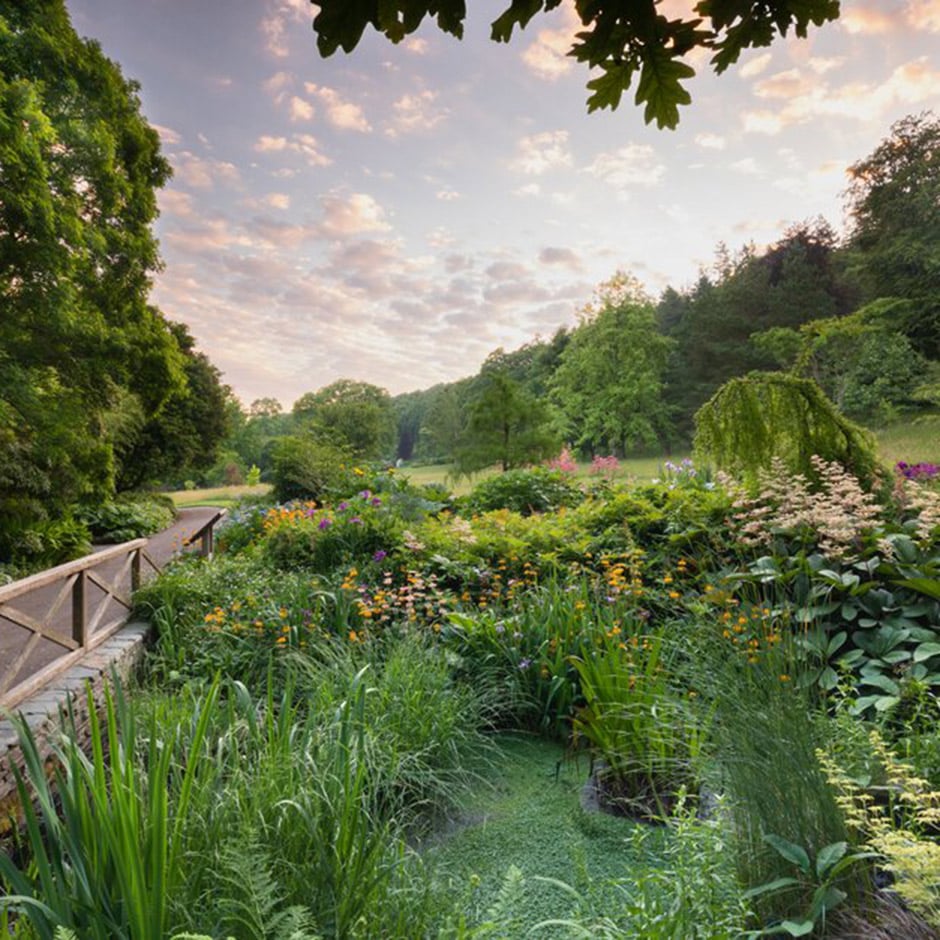
Bog gardens
Ground cover plants
Plants for under trees
If you’re considering artificial turf as a replacement, bear in mind that this can also be colonised by moss and other weeds, and the RHS doesn’t endorse the use of artificial turf. See our guide to plastic-free gardening and choosing sustainable materials for your garden.
Routine lawn care to keep moss at bay
Regular lawn care every autumn and spring should ensure your grass is healthy and vigorous and any unwanted moss is removed and kept at bay.
Autumn lawn care
-
In early autumn, apply a specific autumn feed and mosskiller – or simply an autumn lawn feed if you prefer not to use mosskiller. Organic lawn feeds are available. Take care not to over-apply – follow the instructions on the packet and use the minimum amount
-
Scarify the lawn with a spring-tined rake once the moss has browned or blackened (if you applied mosskiller)
-
Aerate the lawn – or the moss-prone areas of it – with a garden fork or hollow-tiner if necessary. Brush in a light lawn top-dressing of three parts sandy loam, six parts sharp sand and one part peat-free multi-purpose compost
-
If the grass is sparse, scatter lawn seed at a rate of 17–34g per sq m (½–1oz per sq yd), before applying the top-dressing

Autumn lawn care
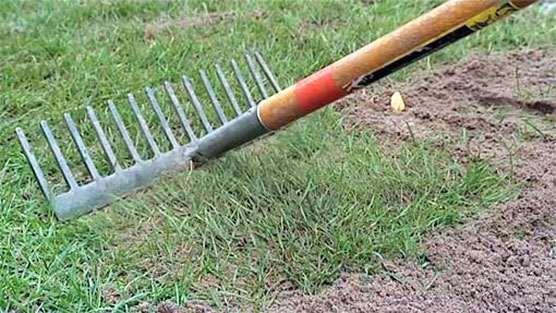
Autumn lawn care
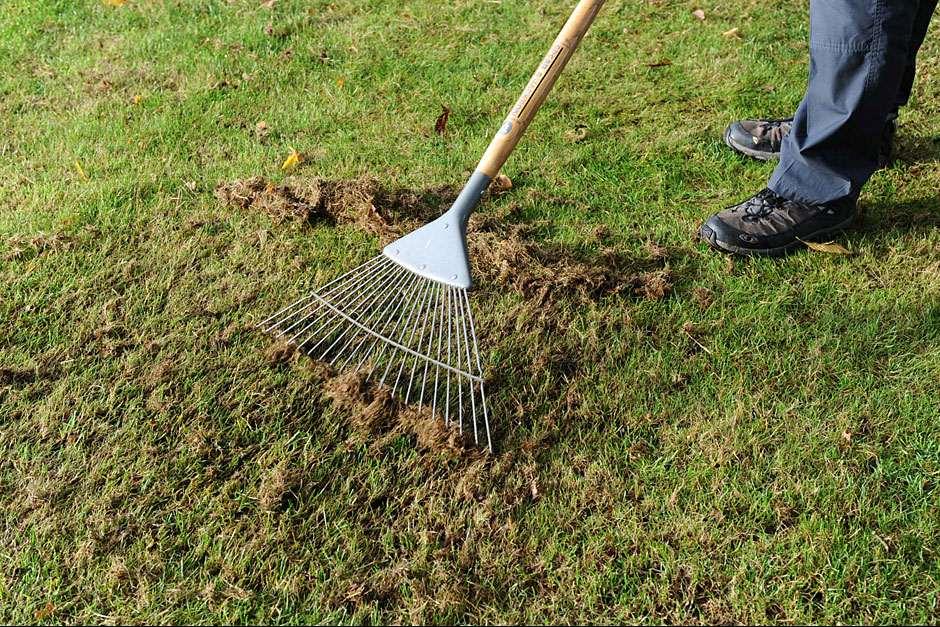
Lawn care in autumn
Spring lawn care
-
In mid- to late March, you can apply a specific spring feed and mosskiller during fine weather, or just a spring lawn feed if you don’t wish to use mosskiller. Organic lawn feeds are available. Take care not to over-apply – follow the instructions on the packet and use the minimum amount
-
In early April, rake out the dead moss – or the living moss if you didn’t apply mosskiller
-
Re-seed any sparsely grassed areas and lightly top-dress, as in autumn, if necessary
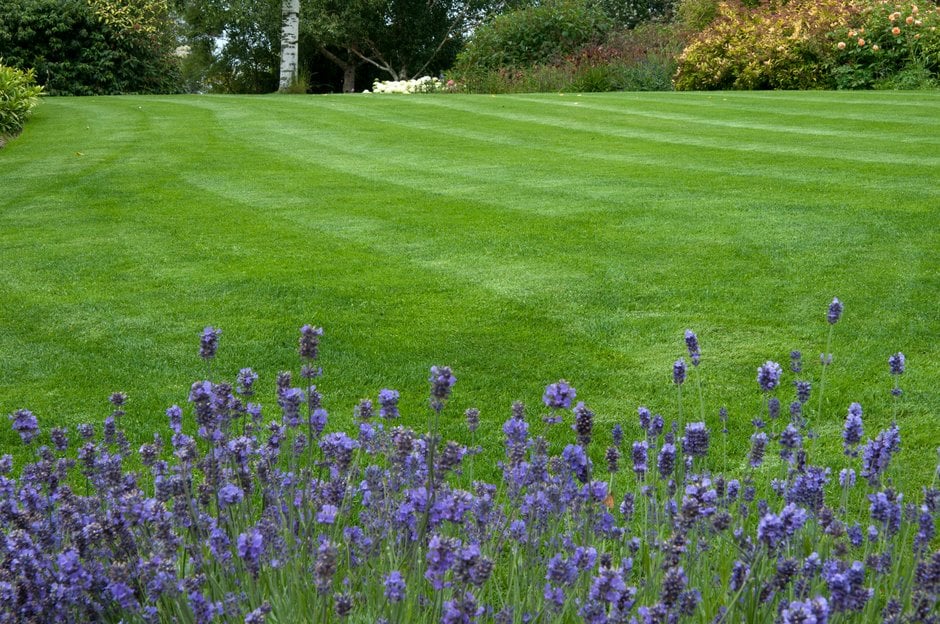
Lawn care in spring and summer
Lawns in shade
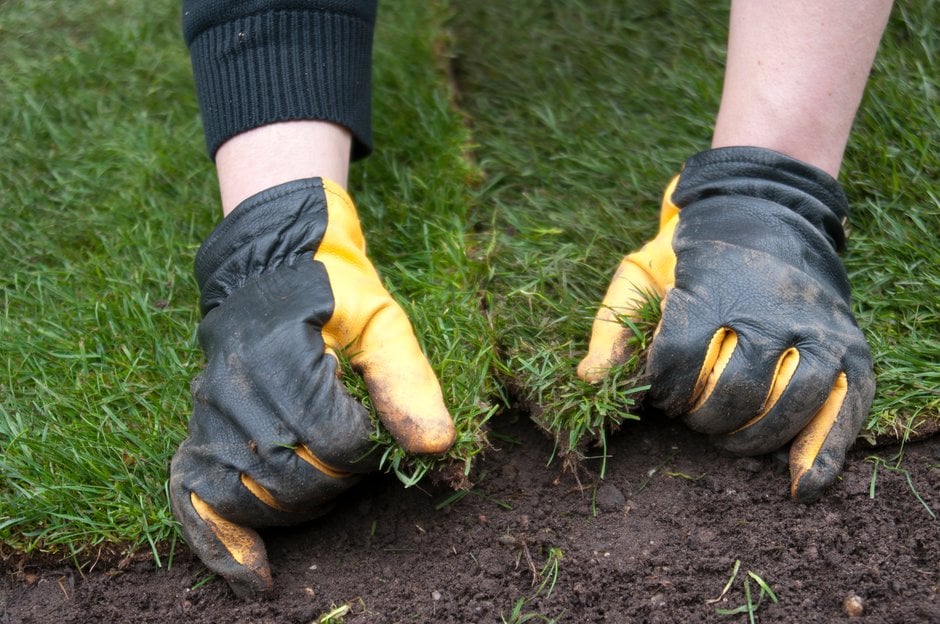
Repairing lawns
Get involved
The Royal Horticultural Society is the UK’s leading gardening charity. We aim to enrich everyone’s life through plants, and make the UK a greener and more beautiful place.